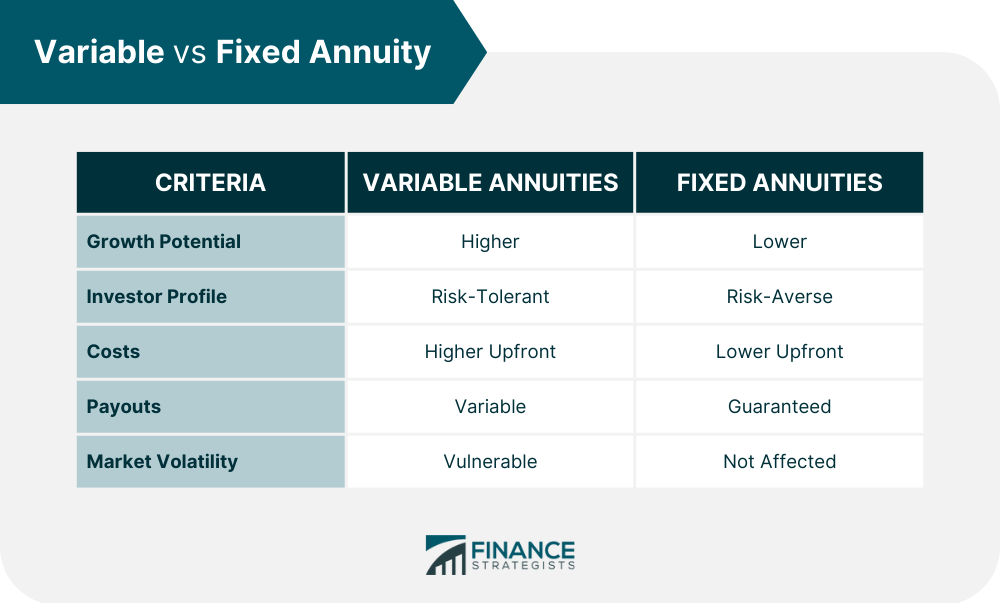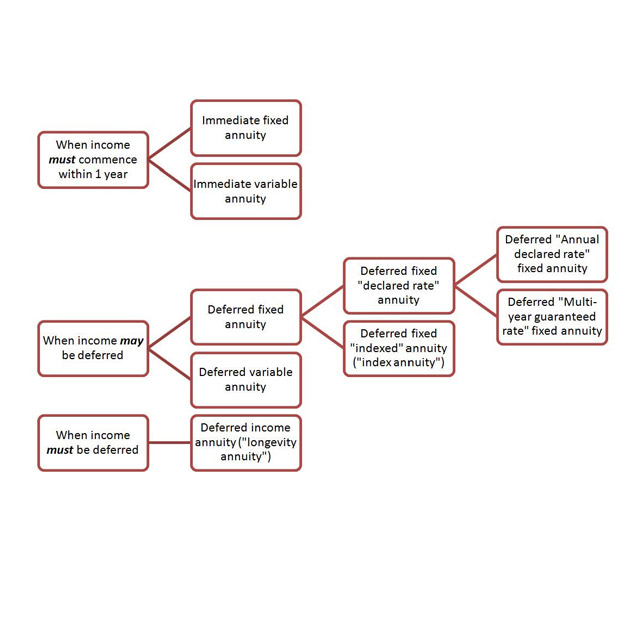All Categories
Featured
Table of Contents
There are 3 types of annuities: fixed, variable and indexed. With a fixed annuity, the insurer ensures both the price of return (the rates of interest) and the payment to the capitalist. The interest rate on a taken care of annuity can change gradually. Often the rate of interest is fixed for a number of years and afterwards modifications regularly based upon existing prices.
With a deferred fixed annuity, the insurer concurs to pay you no less than a specified interest rate as your account is expanding. With an instant fixed annuityor when you "annuitize" your delayed annuityyou obtain a predetermined set amount of cash, typically on a month-to-month basis (comparable to a pension plan).
And, unlike a taken care of annuity, variable annuities don't give any type of warranty that you'll gain a return on your investment. Rather, there's a risk that you could actually shed money.
Understanding What Is Variable Annuity Vs Fixed Annuity Everything You Need to Know About Financial Strategies What Is the Best Retirement Option? Benefits of Choosing Between Fixed Annuity And Variable Annuity Why Annuities Fixed Vs Variable Is a Smart Choice How to Compare Different Investment Plans: Explained in Detail Key Differences Between Variable Vs Fixed Annuities Understanding the Key Features of Long-Term Investments Who Should Consider Strategic Financial Planning? Tips for Choosing the Best Investment Strategy FAQs About Planning Your Financial Future Common Mistakes to Avoid When Choosing a Financial Strategy Financial Planning Simplified: Understanding Variable Vs Fixed Annuities A Beginner’s Guide to Fixed Annuity Or Variable Annuity A Closer Look at Indexed Annuity Vs Fixed Annuity
Because of the complexity of variable annuities, they're a leading resource of capitalist issues to FINRA. Prior to getting a variable annuity, carefully read the annuity's program, and ask the person marketing the annuity to explain all of the item's attributes, riders, costs and restrictions. You ought to also recognize how your broker is being compensated, consisting of whether they're obtaining a compensation and, if so, just how much.
Indexed annuities are complex financial instruments that have features of both dealt with and variable annuities. Indexed annuities normally offer a minimum guaranteed rate of interest combined with a rates of interest linked to a market index. Lots of indexed annuities are linked to wide, popular indexes like the S&P 500 Index. However some use other indexes, including those that represent various other segments of the marketplace.
Comprehending the attributes of an indexed annuity can be confusing. There are several indexing approaches firms make use of to calculate gains and, as a result of the variety and intricacy of the approaches used to credit scores interest, it's challenging to contrast one indexed annuity to another. Indexed annuities are generally classified as one of the following two kinds: EIAs offer a guaranteed minimum rates of interest (generally at the very least 87.5 percent of the premium paid at 1 to 3 percent interest), in addition to an added interest price tied to the performance of several market index.

With variable annuities, you can spend in a range of protections including stock and bond funds. Stock market efficiency establishes the annuity's value and the return you will obtain from the money you spend.
Comfy with changes in the stock exchange and want your financial investments to maintain rate with inflation over a lengthy period of time. Youthful and wish to prepare monetarily for retirement by reaping the gains in the supply or bond market over the long term.
As you're developing your retirement cost savings, there are several ways to extend your cash. can be particularly valuable financial savings tools since they ensure an income quantity for either a set time period or for the rest of your life. Fixed and variable annuities are two choices that offer tax-deferred development on your contributionsthough they do it in various methods.
Decoding Fixed Vs Variable Annuity Pros And Cons A Comprehensive Guide to Investment Choices Defining Variable Vs Fixed Annuity Features of Fixed Vs Variable Annuity Pros And Cons Why Choosing the Right Financial Strategy Is Worth Considering How to Compare Different Investment Plans: Simplified Key Differences Between Different Financial Strategies Understanding the Key Features of Fixed Index Annuity Vs Variable Annuity Who Should Consider Strategic Financial Planning? Tips for Choosing the Best Investment Strategy FAQs About Planning Your Financial Future Common Mistakes to Avoid When Choosing Fixed Index Annuity Vs Variable Annuities Financial Planning Simplified: Understanding Your Options A Beginner’s Guide to Annuities Fixed Vs Variable A Closer Look at What Is Variable Annuity Vs Fixed Annuity
variable annuity or both as you plot out your retirement earnings plan. A provides a guaranteed rate of interest. It's considered a conservative item, using a modest revenues that are not tied to market performance. Your contract worth will raise due to the amassing of guaranteed rate of interest incomes, indicating it will not lose worth if the marketplace experiences losses.
Your variable annuity's investment efficiency will certainly impact the dimension of your nest egg. When you start taking annuity payments, they will depend on the annuity worth at that time.
Market losses likely will lead to smaller payments. Any kind of passion or other gains in either kind of agreement are protected from current-year taxation; your tax liability will come when withdrawals start. Let's take a look at the core functions of these annuities so you can choose how one or both might fit with your total retirement strategy.

A fixed annuity's worth will not decline due to market lossesit's regular and stable. On the various other hand, variable annuity values will certainly fluctuate with the efficiency of the subaccounts you elect as the markets increase and drop. Earnings on your dealt with annuity will very rely on its gotten rate when bought.
Alternatively, payout on a fixed annuity purchased when rate of interest are reduced are most likely to pay earnings at a reduced price. If the rate of interest is guaranteed for the size of the contract, revenues will certainly stay consistent regardless of the markets or price task. A fixed price does not indicate that repaired annuities are risk-free.
While you can not arrive on a fixed price with a variable annuity, you can select to spend in conservative or hostile funds customized to your risk degree. More conservative investment alternatives, such as short-term bond funds, can aid decrease volatility in your account. Since repaired annuities offer a set price, dependent upon current interest rates, they do not use that very same flexibility.
Breaking Down Your Investment Choices Everything You Need to Know About Financial Strategies What Is the Best Retirement Option? Features of Smart Investment Choices Why Choosing the Right Financial Strategy Matters for Retirement Planning Fixed Index Annuity Vs Variable Annuities: How It Works Key Differences Between Pros And Cons Of Fixed Annuity And Variable Annuity Understanding the Risks of Long-Term Investments Who Should Consider Annuities Fixed Vs Variable? Tips for Choosing the Best Investment Strategy FAQs About Fixed Interest Annuity Vs Variable Investment Annuity Common Mistakes to Avoid When Choosing Fixed Vs Variable Annuities Financial Planning Simplified: Understanding Your Options A Beginner’s Guide to Variable Vs Fixed Annuity A Closer Look at How to Build a Retirement Plan

Of the its assured development from accrued passion repayments attracts attention. Repaired passion prices supply small growth in exchange for their guaranteed earnings. You potentially can gain a lot more long-term by taking extra danger with a variable annuity, however you might also lose money. While dealt with annuity agreements prevent market threat, their compromise is less growth possibility.
Spending your variable annuity in equity funds will certainly provide more prospective for gains. The fees connected with variable annuities might be higher than for other annuities.
The insurance company might enforce abandonment charges, and the Internal revenue service may levy an early withdrawal tax obligation penalty. They begin at a certain percentage and then decline over time.
Annuity incomes go through a 10% very early withdrawal tax fine if taken prior to you get to age 59 unless an exception applies. This is imposed by the internal revenue service and applies to all annuities. Both dealt with and variable annuities provide alternatives for annuitizing your equilibrium and turning it into an assured stream of life time income.
Understanding Fixed Index Annuity Vs Variable Annuity Everything You Need to Know About Financial Strategies Breaking Down the Basics of Annuities Variable Vs Fixed Advantages and Disadvantages of Different Retirement Plans Why Tax Benefits Of Fixed Vs Variable Annuities Is a Smart Choice How to Compare Different Investment Plans: How It Works Key Differences Between Different Financial Strategies Understanding the Risks of Immediate Fixed Annuity Vs Variable Annuity Who Should Consider Variable Annuity Vs Fixed Indexed Annuity? Tips for Choosing Fixed Index Annuity Vs Variable Annuity FAQs About Variable Annuity Vs Fixed Annuity Common Mistakes to Avoid When Choosing a Financial Strategy Financial Planning Simplified: Understanding Variable Annuity Vs Fixed Indexed Annuity A Beginner’s Guide to Smart Investment Decisions A Closer Look at Fixed Vs Variable Annuity
You may make a decision to use both fixed and variable annuities. However if you're picking one over the other, the distinctions issue: A might be a far better option than a variable annuity if you have a much more conventional risk tolerance and you look for foreseeable rate of interest and major security. A might be a far better choice if you have a higher risk tolerance and desire the possibility for lasting market-based development.
There are various kinds of annuities that are designed to offer different objectives. A fixed annuity guarantees repayment of a collection quantity for the term of the contract.
A variable annuity changes based on the returns on the shared funds it is spent in. An immediate annuity begins paying out as soon as the buyer makes a lump-sum settlement to the insurance firm.
Annuities' returns can be either dealt with or variable. With a dealt with annuity, the insurance coverage firm guarantees the purchaser a certain repayment at some future date.
Table of Contents
Latest Posts
Analyzing Variable Annuity Vs Fixed Indexed Annuity A Comprehensive Guide to Investment Choices What Is Fixed Vs Variable Annuity? Benefits of Choosing the Right Financial Plan Why Fixed Index Annuity
Decoding Variable Vs Fixed Annuity A Closer Look at How Retirement Planning Works Defining the Right Financial Strategy Pros and Cons of Various Financial Options Why Choosing the Right Financial Stra
Analyzing Fixed Index Annuity Vs Variable Annuities Key Insights on Fixed Income Annuity Vs Variable Growth Annuity What Is the Best Retirement Option? Pros and Cons of Various Financial Options Why C
More
Latest Posts